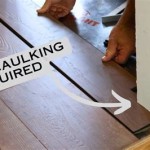How Do You Install Vinyl Flooring Over Ceramic Tile?
Installing vinyl flooring over ceramic tile can be a cost-effective and aesthetically pleasing way to update your home's interior. Vinyl flooring offers a variety of benefits, including durability, water resistance, and affordability. However, laying vinyl over ceramic tile requires careful preparation to ensure a successful and long-lasting installation. This article outlines the essential steps involved in this process.
Step 1: Preparing the Ceramic Tile Substrate
The success of your vinyl flooring installation hinges on the condition of your ceramic tile substrate. It needs to be clean, level, and free from cracks or loose tiles. To achieve this:
- Thoroughly clean the tile surface: Remove any dirt, debris, grease, or wax with a strong cleaning agent. Pay special attention to grout lines, which can trap dirt and affect adhesion.
- Inspect for loose or cracked tiles: Identify any tiles that are loose or cracked. These need to be repaired or replaced to prevent unevenness in the finished floor.
- Evaluate for levelness: Use a level to check for any significant bumps or dips in the tile surface. Unevenness can cause the vinyl flooring to buckle or wrinkle. If necessary, use a leveling compound to correct any unevenness.
Step 2: Choosing the Right Vinyl Flooring
Not all vinyl flooring is suitable for installation over ceramic tile. You need to consider the type of vinyl and its installation method.
- Self-adhesive vinyl tiles: These are easy to install, as they come with an adhesive backing. However, they are typically thinner and may not be suitable for high-traffic areas.
- Click-lock vinyl planks: These planks interlock together, creating a floating floor that sits on top of the existing tile. They are typically thicker and more durable than self-adhesive tiles.
- Luxury vinyl tile (LVT): This is a premium option that offers a wide range of styles and designs, including realistic wood and stone looks. It requires specific installation techniques, usually involving a layer of moisture-resistant underlayment.
When choosing vinyl flooring, it is important to consider the type of ceramic tile being covered. If the tiles are porous, you may need a special primer to ensure proper adhesion. Consult with a flooring expert for guidance on the best vinyl flooring option for your specific situation.
Step 3: Installing the Underlayment
Underlayment is a crucial component in vinyl floor installations. It provides cushioning and sound dampening, and it also acts as a moisture barrier to prevent water damage. When installing vinyl flooring over ceramic tile, a moisture-resistant underlayment is especially important, as ceramic tile can be susceptible to moisture penetration.
There are different types of underlayment available, each with its own properties and benefits. Some common types include:
- Foam underlayment: This is a popular option that provides cushioning and sound insulation.
- Cork underlayment: This is a natural and sustainable option that offers good cushioning and sound reduction.
- Rubber underlayment: This is a durable option that provides excellent moisture resistance.
The specific type of underlayment you choose will depend on the type of vinyl flooring you are installing, the condition of the ceramic tile substrate, and your desired level of cushioning and sound insulation. Ensure that the underlayment you choose is specifically designed for use with vinyl flooring.
Step 4: Installing the Vinyl Flooring
The installation process for vinyl flooring will vary depending on the type of vinyl flooring you choose. Self-adhesive tiles require peeling off the backing and pressing them onto the prepared substrate. Click-lock planks are typically installed by snapping the pieces together. Luxury vinyl tile (LVT) often requires a professional installer for proper installation, which may involve gluing or floating the floor.
Regardless of the type of vinyl flooring, it is important to follow the manufacturer's instructions carefully. This will ensure that the flooring is installed correctly and that the warranty is not voided. When installing vinyl flooring, be sure to leave a proper expansion gap around the perimeter of the room to allow for movement.
Step 5: Finishing Touches
Once the vinyl flooring is installed, it is important to finish the installation with proper trim and accessories. This includes installing shoe molding around the perimeter of the room to hide the expansion gap and create a clean, finished look. You may also want to install transition strips to connect the vinyl flooring to other flooring types in your home.
Finally, it is important to clean the floor with a mild cleaner and avoid using harsh chemicals that could damage the finish. Maintaining your vinyl flooring with regular cleaning will help to maintain its appearance and extend its lifespan.
Installing vinyl flooring over ceramic tile can be a rewarding and cost-effective project. By following the steps outlined in this article, you can achieve a beautiful and durable new floor in your home.

Transform Your Home Installing Vinyl Flooring Over Ceramic Tiles City Wall And Floor

Installing Luxury Vinyl Over Existing Tiles Choices Flooring

How To Install Luxury Vinyl Plank Over Tile Flooring

How To Install Vinyl Or Laminate Flooring Over Existing Ceramic Tile

How To Install Vinyl Flooring Over Tiles Linoleum Thrift Diving

Can You Put Lvp Over Tile Wc Supply Whole Cabinet

How To Lay Vinyl Flooring Sheet Over Tiles

How To Install Vinyl Plank Floors In A Bathroom Over Tile

Installing Vinyl Flooring Over Ceramic Tile M Fine Lumber

Can You Install Vinyl Plank Flooring Over Tile
See Also







